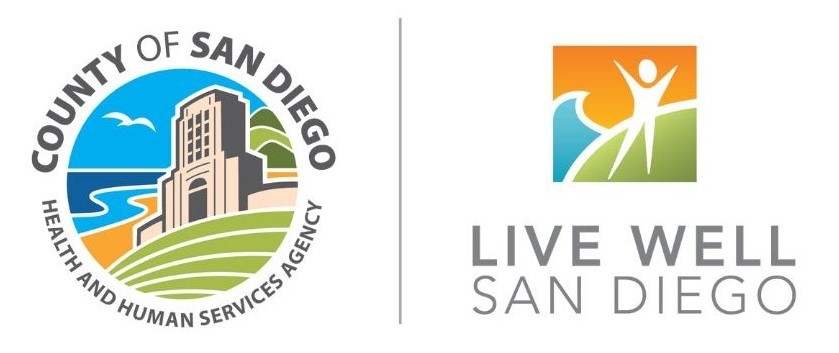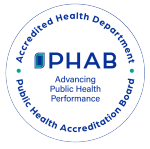Reducing and Eliminating Health Disparities with Information (REHDI) Initiative
Welcome to the REHDI Initiative website of Public Health Services (PHS), County of San Diego, Health and Human Services Agency. The REHDI webpage includes PHS efforts to reduce health disparities, links to health disparities data including health equity reports, and other resource links.

In 2001, the Reduce and Eliminate Health Disparities with Information (REHDI) Initiative was created. Our goal is to help reduce and eliminate health disparities by providing information about health conditions, including infectious and chronic diseases, which affect various populations differently. Key influencing factors (i.e., social determinants of health) include, for example, age, geography, gender, race/ethnicity, and socio-economic status. Our REHDI webpage includes PHS efforts to reduce health disparities, links to health disparities data including health equity reports, and other resource links.

Our Vision
Health equity for San Diego County residents.

Our Health Equity Mission
Public Health Services (PHS) is committed to increasing health
equity in San Diego County through continual development of policies
and procedures, community capacity, awareness, and operational
responsiveness and support to staff.

PHS Health Equity Goal
To help reduce and eliminate health disparities by providing information about health conditions, including infectious and chronic diseases, which affect various populations differently. Key influencing factors (i.e., social determinants of health) include, for example, age, geography, gender, race/ethnicity, and socioeconomic status.
For population health data on health disparities in the County of San Diego, see the Health Equity Report.
Health Equity-Related Definitions
Health is a state of complete physical, social, and mental well-being, not merely the absence of disease and infirmity. Public Health refers to what we as a society do collectively to ensure the conditions in which people can be healthy.
Health disparities preventable differences in the burden of disease, injury, violence, or opportunities to achieve optimal health that are experienced by socially disadvantaged populations.
Health Equity is when all groups in a population have fair and just opportunities to attain their full health, well-being, and quality of life.
Health Inequity is the differences in population health status and mortality rates that are systemic, patterned, unfair, unjust, and actionable, as opposed to random or caused by those who become ill.
Population Health refers to the health of a population as measured by health status indicators and as influenced by social, economic, and physical environments, personal health practices, individual capacity, and coping skills, human biology, early childhood development, and health services.
Social Determinants of Health refers to conditions in places where people are born, grow, live, play, work, and age that could affect a wide range of health risks and outcomes. These conditions are referred to as social determinants of health (SDOH).

Examples include:
- Education
- Income
- Genetics
- Race/Ethnicity
- Social status
- Social Support Network
- Physical Environment
- Gender
- Age
The Community Health Statistics Unit (CHSU) provides health statistics that describe health behaviors, diseases, and injuries for specific populations, in addition to health trends and comparisons to national targets. The website provides more details on how to access each dashboard website.

The California Healthy Places Index, developed by the Public Health Alliance of Southern California and visualized by Axis Maps, is a powerful tool to explore the community conditions that impact life expectancy. The HPI combines 25 community characteristics, like access to healthcare, housing, education, and more, into a single indexed HPI score. The healthier a community, the higher the HPI score. The HPI applies a positive framework by focusing on community assets rather than what is lacking. Each HPI indicator is linked to our Policy Action Guide, which highlights equitable solutions to improving community health. Download the PDF version of the Healthy Places Index (HPI) Quartiles by Subregional Area Map.
Local and Regional Resources
-
Collaboration
with The Public Health Alliance of Southern California
The Alliance strives to deepen its commitment to advancing health equity and racial justice through policy and institutional changes. -
County
of San Diego HHSA Community Health Statistics - Achieving Health
Equity in San Diego
The Community Health Statistics Unit developed key reports on the status of health equity in San Diego County (e.g., race/ethnicity, geography, gender, socio-economic status). -
Exploring
Health Disparities in San Diego County: Executive
Summary
This executive summary highlights health disparities through five lenses of health equity including age, gender, geography, race/ethnicity, and socioeconomic status. -
Health
and Human Services Agency Health Equity
Overview of the Health Equity efforts within Health and Human Services Agency so collective impact actions may be taken to ensure health and well-being for all San Diego County residents. -
Healthy Places
Index
A project of the Public Health Alliance of Southern California, The Healthy Places Index (HPI) is a powerful and easy-to-use data and policy platform created to advance health equity through open and accessible data. -
Live
Well Indicators
The top 10 Live Well San Diego indicators define what it means to live well in San Diego. Measured across the lifespan among all residents, the Live Well San Diego Indicators capture the collective impact of program, services, and interventions provided by government and community partners striving to improve quality of life so that all San Diego County residents can be healthy, safe, and thriving. -
Office
of Equity and Racial Justice
San Diego County's Office of Equity and Racial Justice partners with the community to co-create transformative, enduring, structural, and systemic change in San Diego County government. -
Public
Health Services Materials/Resources, Including Those in Multiple
Languages
The Public Health Services (PHS) Department, in the County of San Diego Health and Human Services Agency, provides health services and information in multiple languages, both online and at the County Public Health Centers. This section of the PHS website is a listing od written materials, most of which were developed by the County of San Diego, State of California, or Federal agencies.
State Resources
-
California
Conference of Local Health Officers (CCLHO)
The mission of CCLHO is to prevent disease and improve the health of all California residents. -
California
Department of Public Health, California Office of Binational and
Border Health (COBBH)
COBBH was created to "facilitate cooperation between health officials and health professionals in California and Mexico, to reduce the risk of disease in the California border region and in those areas directly affected by border health conditions." -
California
Department of Public Health, Climate Change, and Health Equity
Section (CCHES)
The Climate Change and Health Equity Section (CCHES) embeds health and equity in California climate change planning and embeds climate change and equity in public health planning. -
California
Department of Public Health, Office of Health Equity
(OHE)
OHE works with community-based organizations and local governmental agencies to ensure that community perspectives and input help to shape a health equity lens in policies and strategic plans, recommendations, and implementation activities. -
California
Reducing Disparities Project (CRDP)
The goal of the CRDP is to simultaneously demonstrate that community-derived mental health practices reduce mental health disparities across the five unserved, underserved, and inappropriately served population groups (African American; Latino/x; Asian and Pacific Islander; Native American; and LGBTQ+) as opposed to traditionally funded mental health services based on Western clinical models. -
Gender
Health Equity Unit (GHEU)
As part of the California Department of Public Health's Office of Health Equity, the Gender Health Equity Unit (GEHU) plays a leadership role in the development of programs and policies intended to eliminate gender-based health disparities in California. -
Health
Equity Research and Statistics Section (HERSS)
HERSS is a leading state section in collecting data and disseminating information about health and mental health disparities and inequities in California. -
Health
in All Policies Initiative
Health in All Policies is a collaborative approach to improving the health of all people by incorporating health considerations into decision-making across sectors and policy areas.
National and Federal Resources
-
American
Medical Association
The American Medical Association is committed to addressing racial and ethnic health care disparities, through the Minority Affairs Section, the Health Care Disparities Program, and other initiatives. -
American
Public Health Association (APHA): Health Equity
Creating health equity is a guiding priority and core value of APHA. APHA works with other sectors to address the factors that influence health, including employment, housing, education, health care, public safety, and food. -
CDC -
Social Determinants of Health
The CDC recognizes the impact of social determinants of health throughout its programs and provides data and resources to identify and address health inequities caused by unhealthy social environments. -
CDC
COVID-19 Response Health Equity Strategy
Progress Towards Reducing COVID-19 Disparities and Achieving Health Equity. -
CDC's
National Center for Chronic Disease Prevention and Health
Promotion (NCCDPHP) - Health Equity
NCCDPHP addresses health equity through its programs, research, tools and resources, and leadership access. -
CDC's
Office of Minority Health and Health Equity (OMHHE)
The mission of OMHEE is to increase CDC's ability to achieve health equity and women's health issues across the nation through science and programs. -
Collaboration with Big
Cities Health Coalition Working Group on Health Equity
The Big Cities Health Coalition collaborates to advance health equity and health for present and future generations. -
Health Equity
Guide
This website is structured around a set of strategic practices that health departments can apply to more meaningfully and comprehensively advance health equity. -
Office of
Climate Change and Health Equity (OCCHE)
The Office of Climate Change and Health Equity addresses the impact of climate change on the health of the American people. Exercising powers of convening, coordination and collaboration, the Office serves as a department-wide hub for climate change and health policy, programming, and analysis, in pursuit of environmental justice and equitable health outcomes. -
The
National Association of County and Community Health Officials
(NACCHO): Health Equity and Social Justice
The goal of NACCHO's Health Equity and Social Justice Program is to advance the capacity of local health departments to confront the root causes of inequities in the distribution of disease and illness through public health practice and their organizational structure. The program's initiatives explore why certain populations bear a disproportionate burden of disease and mortality and what social arrangements and institutions generate those inequities, to design strategy to eliminate them. -
The National Institute on
Minority Health and Disparities (NIMHD)
The mission of NIMHD is to lead scientific research to improve minority health and eliminate health disparities. -
U.S. Department of Health
and Human Services: Office of Minority Health (OMH)
OMH is dedicated to improving the health of racial and ethnic minority populations through the development of health policies and programs that will help eliminate health disparities.
Global Resources
-
Sustainable Development
Goals
17 Sustainable Development Goals (SDGs) were created as an urgent call for action by all countries - developed and developing - in a global partnership. It is recognized that ending poverty and other deprivations must go hand-in-hand with strategies that improve health and education, reduce inequality, and spur economic growth - all while tackling climate change and working to preserve our oceans and forests. For more information, view the 2023 Agenda for Sustainable Development. -
The World Health
Organization (WHO) - Global Health Observatory Data, Health Equity
Monitor
Data are presented according to social, demographic, economic, or geographical factors helping to identify vulnerable populations and target health policies, programs, and practices. -
The World
Health Organization (WHO) - Social Determinants of Health
Unit
The WHO is a global champion for addressing social determinants of health guiding research and policy to support countries in taking action to address health inequities. -
Universal
Declaration of Human Rights
The Universal Declaration of Human Rights (UDHR) is a milestone document in the history of human rights. The UDHR was adopted by the UN General Assembly in 1948 and was the result of the experience of the Second World War.













